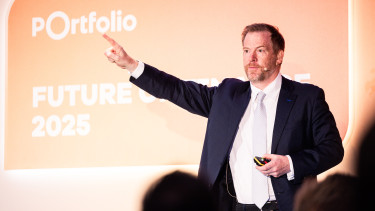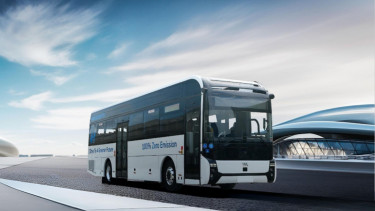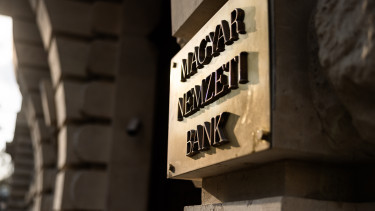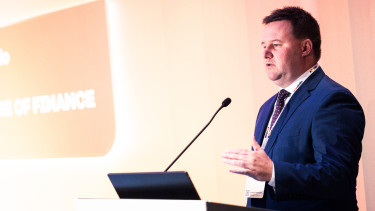At airports, and bank offices, we can already see how technology is changing our world

In his presentation, Alex Miller addressed the question of how governments, companies and societies can adapt to technological, economic and political processes that are simultaneously threatening and promising. Using specific examples and recent data, Miller presented a historical perspective to show how uncertainty and vast opportunities generated by megatrends will become intertwined by the middle of the 21st century.
Ever graver risks
According to the World Economic Forum's risk register, social division, misinformation and disinformation are among the greatest threats in the years ahead. From a ten-year perspective,
climate change and the scarcity of natural resources are the biggest concerns.
Although many people feel that we are living in particularly difficult times, a review of the political risks of the past 120 years shows that every generation has experienced crises, such as wars, financial crises and oil price shocks. Investors, governments and innovators have always had to navigate uncertainty.
Janus-faced new technologies
Artificial intelligence represents both a breakthrough and a danger. One of the most well-known cases involves an American mother who nearly paid a $1 million ransom after hearing what she thought was her kidnapped daughter's voice on the phone. The FBI later revealed that the voice had been synthetically cloned.
Similar scams are also emerging in the corporate world. Financial employees have been tricked into transferring money to fraudsters based on fake voice or video identification after believing calls to be from senior executives in London or New York. AI is therefore creating new types of vulnerability that were previously unknown.
The demographic elephant in the room
One of the greatest and most unique challenges of our time is demographic change. Currently, only 96 of the 205 UN member states are experiencing population growth. By 2050, this number will fall below 50, half of which will be in sub-Saharan Africa.
In advanced economies, a decline in the labour force can lead to a decline in economic performance while putting enormous pressure on public finances. In healthcare, governments are increasingly spending on prevention and maintaining productivity. Rather than supporting emergency care, for example, they are investing in drugs such as Wegovy to help people stay active in the labour market for longer.
One of the main drivers of robotisation and the spread of physical AI is labour shortages.
Automation in everyday life
Automation is no longer just a vision of the future; it is already here. At Cologne Airport, coffee in the arrivals hall is made exclusively by fully automated baristas. Given the number of baristas working worldwide, it is clear that millions of jobs could be at risk.
In agriculture, robots can now pick raspberries and strawberries with the same precision as humans. Although self-driving cars are still rare in Europe, they were permitted on public roads in London in summer 2023. In healthcare, the Civil Aviation Authority has approved the use of drones to transport blood samples between hospitals and laboratories.
Rethinking work and skills
Artificial intelligence is transforming not only tasks, but also career paths. FORTUNE 500 companies lose 6–8% of their workforce every year, often because employees do not feel valued. New AI solutions can catalogue employees' skills and reassign them to other roles within the company. This means that, with retraining, even those with only 30–60% of the necessary competencies can fill critical positions.
In the future, HR managers may no longer see candidates' names or qualifications in the final round of job interviews.
Instead, they will be able to assess how well a candidate would fit into the team based on an AI-generated personality and cognitive diversity profile.
Trade and economic transformation
The structure of global trade is also changing. Sixteen years on from the global financial crisis, growth remains below previous levels. For example, China exports much less to the United States and is targeting other regions of the world instead. Dissatisfaction among voters in democracies is also contributing to the realignment of trade relations.
The Age of AI: Investments and Impacts
The world is living in the AI era, as evidenced by venture capital flows. In the first half of 2023,
almost half of all global venture capital investments were related to AI, particularly generative applications for customer service and other industries.
The technological analogies are encouraging. Initially, bank ATMs and spreadsheets were thought to threaten jobs, but ultimately, employment in the banking sector increased rather than declined. AI is expected to transform jobs in a similar way rather than eliminate them.
However, doubts remain: an MIT study published in August this year showed that 95% of AI projects do not generate a measurable return on investment within six months. Some argue that this is to be expected, as productivity gains tend to be realised over the longer term. (Read more about the issue at Marketing AI Institute (skeptical), Harvard Business Review (skeptical), Futuriom (skeptical), Forbes, or Fortune.)
Finances and AI
The financial sector relies on huge amounts of data on a daily basis and is therefore one of the most promising areas for AI. For example, Citi processes $3 trillion worth of transactions every day in its global services business.
AI is already being used to support treasury processes, cash flow optimisation, compliance and risk management.
Many large companies, including an airline that employs 180,000 people, have already introduced internal language models to help their employees perform their daily tasks more efficiently.
The new world of digital money
The form of money is also changing. Central bank digital currencies (CBDCs), stablecoins and tokenised deposits will coexist.
- For large corporations, reliability and compliance are paramount.
- For SMEs, reducing costs is key.
- Consumers primarily look for speed and convenience.
The government and international organisations are also taking advantage of the opportunities offered by technology. For example, the World Bank spends $120 billion on development projects each year and uses blockchain solutions to increase transparency, ensuring that the funds reach their intended recipients.
Balance: risks and opportunities
The big question for the future is not whether technology will replace humans in the labour market, but how we can adapt to this change. Although AI and blockchain may sometimes appear to be 'problem-free solutions', they actually have a growing number of practical applications driven by demographic trends, commercial changes and economic imperatives.
History teaches us that every new technology has transformed workplaces, but has not eliminated them.
The key question is whether governments, companies and individuals will be able to manage risks and utilise innovation to promote inclusive and sustainable growth.
Photo: Ákos Stiller / Portfolio











